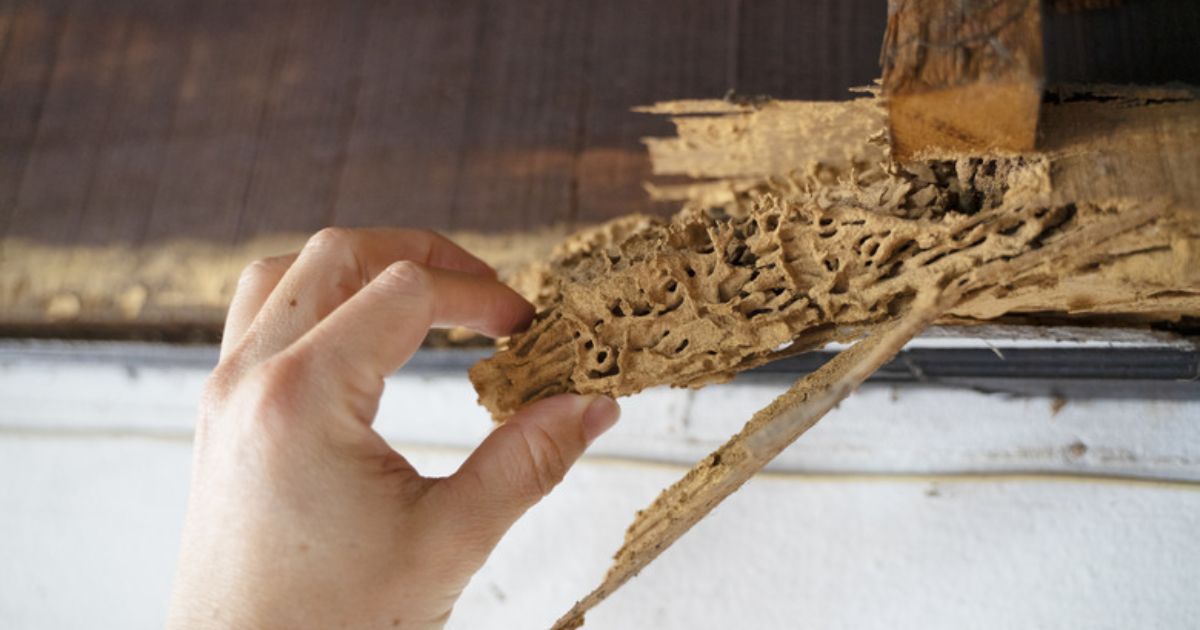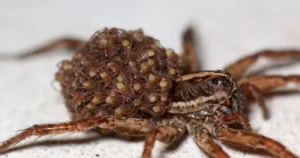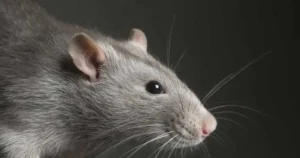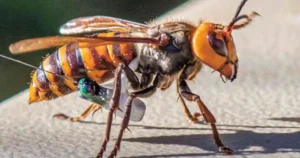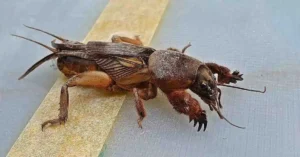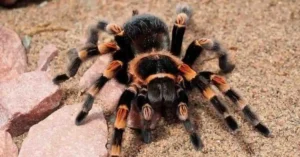Termites often considered a silent but significant threat to homes, can cause extensive structural damage if left unchecked. These wood-consuming insects are not only persistent but also difficult to detect in the early stages of an infestation. This detailed guide will explore the risks of living in a termite-infested house, methods to manage and eliminate infestations, and strategies to prevent future problems.
By the end you’ll gain insights into the best practices for safeguarding your home against these destructive pests.
What Are Termites?
Termites are small insects belonging to the Isoptera order. They thrive in colonies and primarily feed on cellulose—a major component of wood, paper, and plant material. Termites are categorized into three main types:
- Subterranean Termites: Found in soil and known for constructing mud tubes to access food sources.
- Drywood Termites: Infest dry wood and don’t require soil contact.
- Dampwood Termites: Prefer wood with high moisture content and are common in humid environments.
Why Are Termites Dangerous?
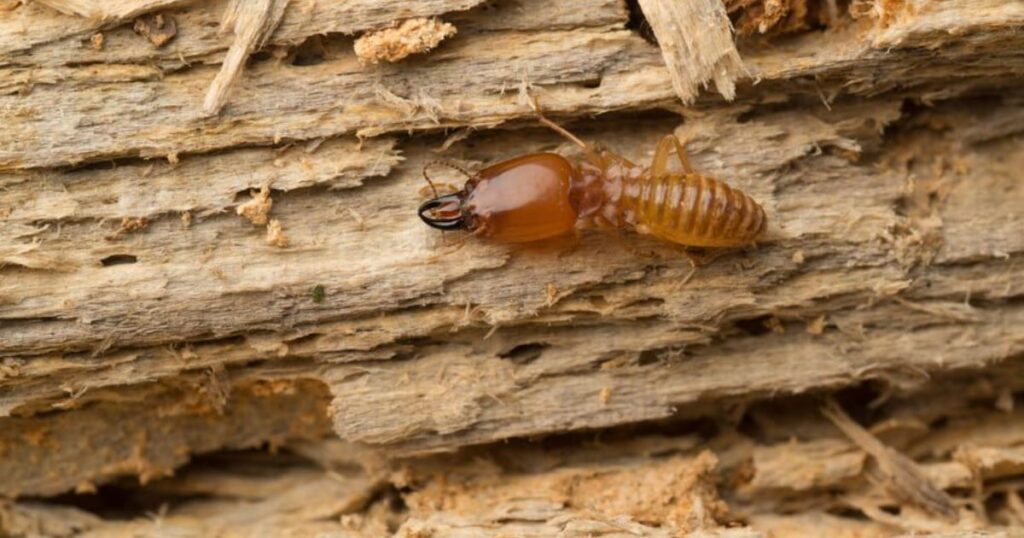
Although termites don’t pose direct health risks to humans, their activities can lead to severe consequences:
- Structural Weakness: Termites consume wood from the inside out, weakening beams, flooring, and walls.
- Economic Losses: In the U.S., termite damage causes homeowners over $5 billion annually.
- Health Risks: Termite infestations often promote mold growth, which can trigger respiratory issues in sensitive individuals.
Signs of Termite Infestation
Detecting termites early is crucial to minimize damage. Here are common indicators:
1. Visible Damage to Wood
Termite-infested wood often appears hollow or flaky. Gently tapping on the wood may produce a hollow sound.
2. Mud Tubes
These pencil-thin tunnels are constructed by subterranean termites to travel between their colony and food source.
3. Swarmers or Discarded Wings
Termite swarmers, or winged termites, emerge during mating seasons. Their shed wings near windowsills or doorways are a sign of infestation.
4. Frass (Termite Droppings)
Drywood termites leave behind small, pellet-like droppings as they burrow through wood.
5. Noises Inside Walls
You may hear faint clicking sounds as soldier termites communicate by banging their heads against wood.
Can You Live in a House with Termites?
The Short Answer
While technically possible, living in a termite-infested home comes with risks that make immediate intervention essential.
Risks of Staying in an Infested Home
- Safety Concerns: Prolonged infestations weaken wooden structures, leading to potential collapses.
- Higher Costs: Delaying treatment allows termites to cause extensive damage, increasing repair expenses.
- Health Hazards: Mold and allergens associated with termite activity can affect indoor air quality.
For peace of mind and long-term savings, addressing the infestation promptly is the best course of action.
How to Handle a Termite Infestation
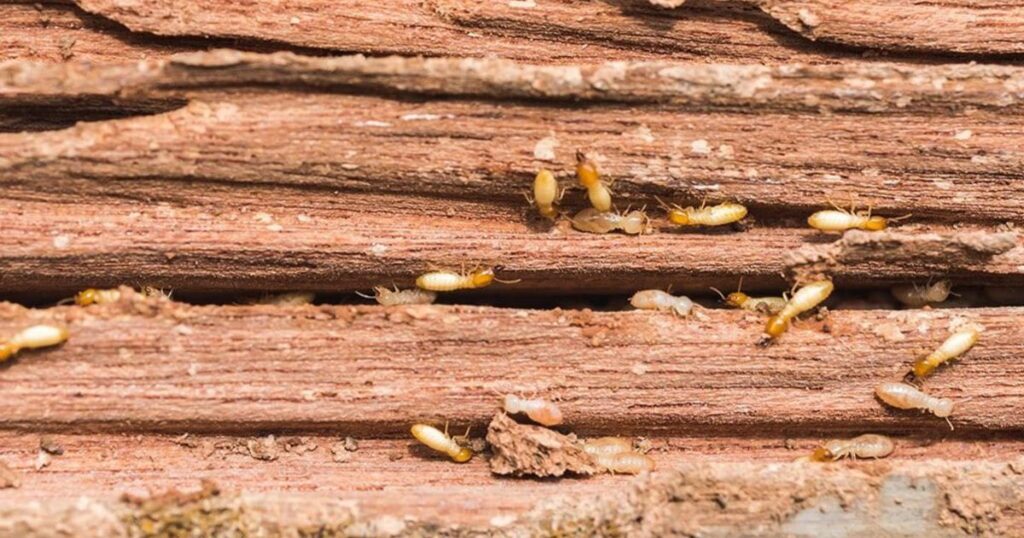
Once you’ve identified a termite problem, take these steps to address it effectively:
1. Seek Professional Help
Hiring a licensed pest control service ensures a thorough evaluation and treatment tailored to your specific infestation. Experts use advanced techniques, such as:
- Liquid Termiticides: These are applied around the home’s foundation to create a barrier.
- Bait Systems: Termite bait stations attract termites and expose them to slow-acting toxins.
2. DIY Termite Treatments
For minor infestations or as a preventive measure, consider:
- Boric Acid: A natural substance that disrupts termites’ digestion.
- Orange Oil: Effective for spot-treating small infestations.
- Diatomaceous Earth: A powder that dehydrates termites upon contact.
3. Whole-House Fumigation
In cases of severe infestations, fumigation may be necessary. This process involves sealing the home and releasing gas to exterminate termites at all life stages.
Preventing Termite Infestations
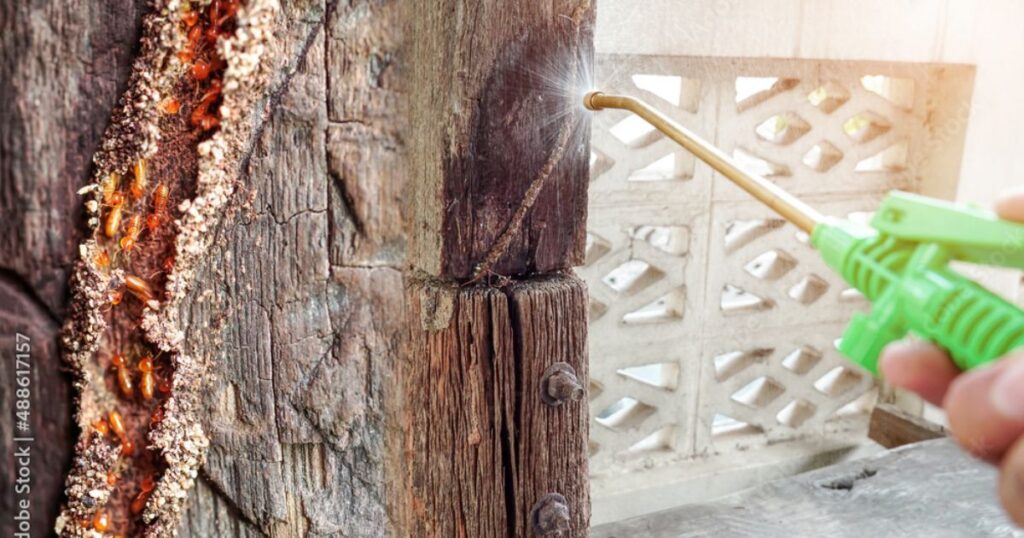
1. Eliminate Moisture
Termites thrive in damp environments. Reduce moisture by:
- Fixing leaking pipes and faucets.
- Installing dehumidifiers in basements and crawl spaces.
- Cleaning gutters regularly.
2. Use Termite-Resistant Materials
During construction or renovation, opt for treated wood or non-wood alternatives like concrete, metal, or plastic.
3. Maintain Proper Landscaping
- Keep soil around the foundation dry by ensuring proper drainage.
- Avoid storing firewood or mulch near your home’s exterior.
4. Routine Inspections
Schedule annual termite inspections with a pest control expert, especially if you live in an area prone to infestations.
5. Apply Preventive Treatments
Apply termiticides around your home’s perimeter to deter termites from entering.
The Financial and Emotional Costs of Neglect
Ignoring a termite infestation doesn’t just lead to costly repairs—it can also affect your quality of life. The stress of dealing with persistent pests, coupled with the fear of structural failure, can take a significant toll on homeowners.
Investing in early detection and preventive measures is far more economical and less stressful than dealing with the aftermath of unchecked termite activity.
Conclusion
Living in a house with termites may seem manageable in the short term, but the risks far outweigh the benefits. By recognizing early signs, consulting professionals, and adopting proactive prevention strategies, you can protect your home from these destructive pests. A termite-free home is not only safer but also more enjoyable and valuable in the long run.
FAQs
1. What attracts termites to my home?
Termites are drawn to wood, moisture, and warm environments. Excessive vegetation, poor drainage, and wooden structures in contact with soil are common attractants.
2. How can I distinguish termites from ants?
Termites have straight antennae, a broad waist, and equal-length wings, while ants have bent antennae, a pinched waist, and wings of varying lengths.
3. Can I permanently get rid of termites?
While it’s impossible to eliminate termites from the environment entirely, consistent treatments and preventive measures can keep your home termite-free.
4. How often should I inspect my house for termites?
Annual inspections are recommended, but you may need more frequent checks if you live in a high-risk area or notice signs of activity.

James William is a passionate animal lover and expert in the Animals and Pets niche. With years of experience in pet care, wildlife studies, and blogging, James shares practical tips, heartwarming stories, and expert advice to help pet owners build stronger bonds with their furry, feathered, and scaly companions.
